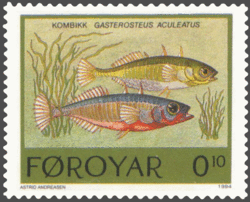Tag Archives: stickleback
Male Fish Won’t “Ask For Directions”
Recent research has come to the astonishing conclusion that fish, specifically the males, positively refuse to ask for directions when they are breeding.
A recent research project, by the University of St. Andrews, has found that male fish seem to become more anti-social feeders, becoming even more so when they are ready to spawn.
As a result of this, they put themselves in greater peril, by leaving the shoal behind.
The claim is being made by researchers in charge of the project that this is one of the first studies performed that has shown a differences in the sexes when it comes to how animals learn from one another.
The current belief is that this trait is only seen in male fish when they are getting ready to spawn or are spawning, and may correlate to the distinct pressures faced by the sexes when spawning.
The research was conducted by Dr. Mike Webster and Professor Kevin Laland, whose goal was to take a look at the copying and learning behaviors of ninespine stickleback.
It appears the males tend to look for food reserves on their own, so that they can properly protect their young when the time comes, and this is why they don’t feed together.
Dr Webster added: “We are all familiar with the stereotype of males refusing to ask for directions – this might apply to fish too, but only when they are preparing to breed.”
Robotic Fish Head of the School!
In a rather interesting turn of events, scientists have just released a robotic fish, which appears to be able to influence the behavior of other fish in the aquarium.
This “Robofish” has produced some rather interesting results in testing. Not only was it able to get three-spined sticklebacks to join its group, but it also seems to be able to influence their movements about the aquarium.
This amazing innovation was created by John Dyer, Dean Walters, and Natalie Holt, by utilizing a plaster mould and of a stickleback, and then spruced up with authentic patterns and coloring.
The Robofish is guided by pulleys and magnets located underneath the aquarium. This effectively allows the Robofish to move about in programmed patterns. In preliminary testing, Jolyon Faria and some other team members managed to get the Robofish to lead a wild stickleback away from its hiding place and then execute a right-angled turn.
It is awe inspiring to say the least. This is the first time that a robotic fish has managed to have an effect on its natural counter-parts. It is interesting to note that large groups of stickleback were less likely to follow the Robofish, but lone stickleback seemed ready to accept the leadership offered by the creation. It is not known why the Robofish would have a greater effect on lone sticklebacks as opposed to groups, but it is assumed that the lone sticklebacks took comfort in the assertiveness of the Robofish.
More research is needed, however Robofish could have some rather interesting applications in the world today.
